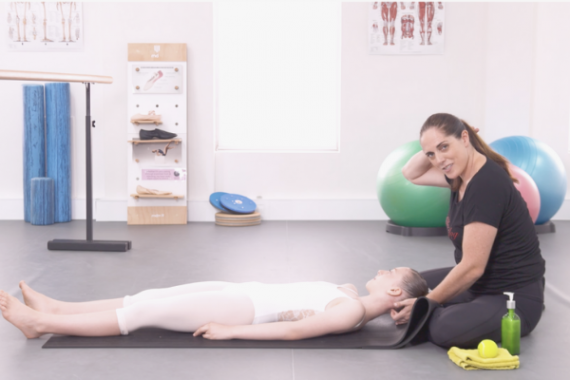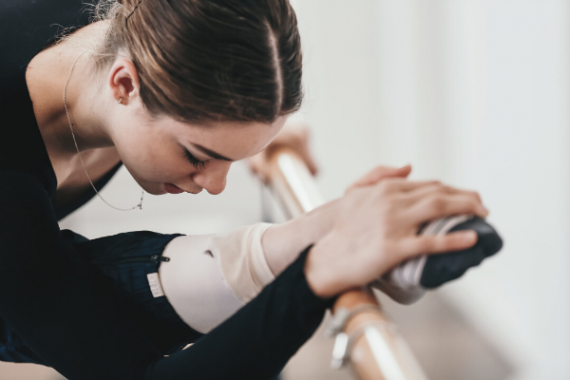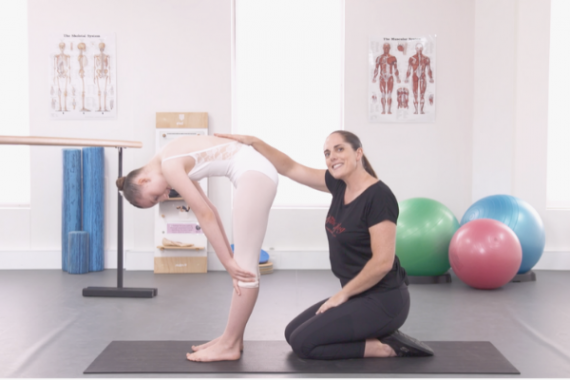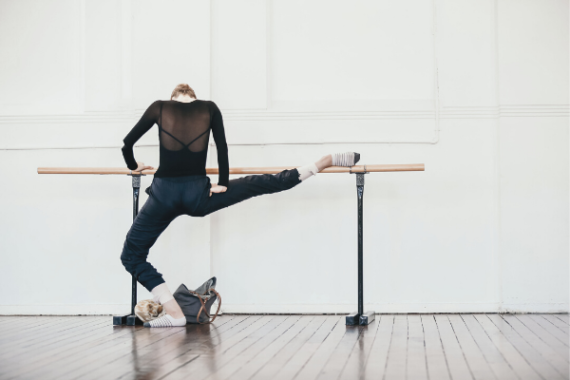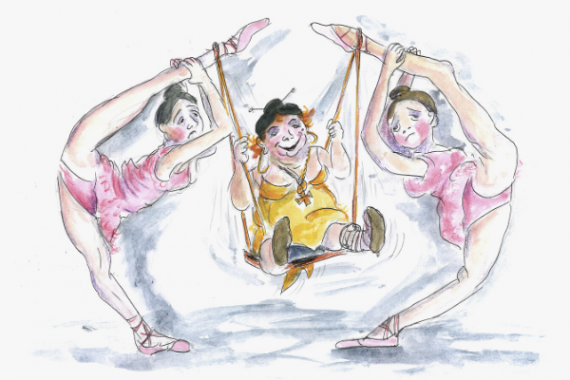- Free Articles
- Shop
- Workshops
- The Dance Educator Series
- L1 – The Fundamentals
- L2 – Pointe Intensive
- L2 – Flexibility Intensive
- L2 – Training Turnout in Tiny Dancers
- L3 – Foot & Ankle Injuries in Dancers – NEW
- L3 – Hip Injuries in Dancers
- L3 – How to Train Extreme Mobility Safely
- Upcoming Workshops
- Workshop FAQ’s
- Workshop Testimonials
- Host Application Form
- Dance Teacher & Health Professional Directory
- Members Areas
- Cart
- My Account
Short Hamstrings that can not be Lengthened
As you're probably well aware, our bodies are in a constant state or reformation and change. A body will constantly adapt to new challenges and inputs given to it, be that running, weight training, dancing or any other kind of activity.
Your body is constantly breaking down and rebuilding itself, in accordance with the instructions that it is receiving from a combination of its genetics, the training that it goes through, the nutrition it receives, its psychological feedback and its inbuilt, natural patterns of movement. All of these things will have an effect on how the hamstrings develop (along with every other muscle), and thus, if all of those things stay the same, then yes, you may very well find yourself with ‘short’ hamstrings. However there are a multitude of ways that these can all be influenced to give a completely different result, allowing you to enjoy a natural freedom of movement.
Because there are so many influencing factors, and I wanted to explain each of them in a little more detail - I have compiled a list of all of the things that I would look at before ever saying to anyone that any part of their body was fixed in a certain way.
1. The Myth of “Short Muscles” - most of us have learnt that muscles are ‘short’ and have to be stretched to allow more flexibility, when this is actually not the case...
2. The Relationship Between your Gluteals and your Hamstrings - how a weakness in one muscle can cause another to become overly tight and contracted.
3. Postural Habits - the way someone sits, stands and sleeps can have a dramatic impact on the mobility of their body. Simple adjustments to these positions can dramatically transform their flexibility.
4. Fascial Tension - tension is not necessarily stored in the muscles, but in the fascia that surounds them. Tension in an area quite far away from the hamstrings can sill affect them, due to deep connections known as Fascial Trains.
5. Neural Mobility - Tension in muscles overlying major nerves can affect how freely they can slide, affecting the mobility of the entire body. Releasing specific points along the line of these nerves can dramatically and instantly alter flexibility.

6. The Stretch Reflex - Stretching can sometimes actually make you feel tighter than before, due to a protective reflex known as the Stretch Reflex.
7. Chronic Contraction - if a muscle is held contracted, for whatever reason, for an extended period of time if will become much harder to let go of. Instead of focusing on stretching that muscle, focus must be made on the true origin of the contraction.
8. Genetics - While we cannot choose our genetics, we can chose how we work with what we have. Try not to blame your Mum and Dad for your tight hamstrings, even if they have them to!
9. Lifestyle factors - Lifestyle factors, especially including the amount and type of physical training that someone is doing, will dramatically change not only their body shape, weight and physical make up, but will also help develop the motor patterns that will actually shape who they becomes physically as an adult.
10. Emotional and Psychological Factors - Emotions and psychological states have a massive effect on our posture and how much tension we hold in certain areas of our body. Resolving deeper issues that are influencing these states can have a profound impact on the tension in the body and therefore our flexibility.
On a psychological level, if you hold the belief that your hamstrings will never be any longer, this is more damaging than anything else. One must understand that the body is constantly in a state of change and that there is potential there to create great levels of flexibility. It has been shown that stress is a major contributor to levels of flexibility through various mechanisms, so by combatting your frustration and exasperation about your flexibility you will be doing your muscles a whole lot of good. Some muscles just hold on a bit tighter for a while during your life and investigating as to why that is will clarify what your main source of tightness is and how to overcome it.
From a practical point of view, I would read through all of the above articles, get your head around the concepts, and then see if you can ascertain as to where your restriction stems from. The treatment that will get the best results for her will probably include a combination of:
- Understanding that your body is not fixed and that there are remedies
- Gentle massage to release the tension that is already there
- An analysis of how you walk, sit, stand and sleep to see if any modifications will reduce the load on your hamstrings
- Finding any trigger points that can release any excessive fascial or neural tension, jumpstarting your flexibility progress
- Developing a gentle daily program of strengthening and mobilising exercises for the whole body
- Focusing on relaxation and staying calm emotionally
- Look at the amount of sugar and other stimulants in your diet (possibly even allergy testing if all else fails)
If you are thinking about The Front Splits Fast Flexibility Program, then yes, this program can be used by students as young as 8, but I would choose just 3 sections of the program to start with and do it with your supervision, and the guidance of a therapist initially if at all possible.
Flexibility Resources
If you are looking to delve deeper into this topic, check out the following programs:
- Front Splits Fast Program: This program translates therapeutic techniques for improving Fascial Mobility and Neural Tension into easy to do exercises that can enable instant changes in your flexibility without the risk of damage through over stretching.
- Level Two Online Flexibility Intensive: If you are a dance teacher, this is the perfect continued education course for you. During this course you will understand the multifactorial nature to flexibility training. You will also explore safe ways of assessing exactly where each individual is restricted in order to create the most effective program.
- Level Three Online Flexibility Intensive on 'How to Train Extreme Mobility Safely': This workshop will help you assess your students in detail and be able to offer them effective techniques in a logical clear order to get them on the way to achieving THEIR optimal flexibility. It is also for teachers who are concerned at the extreme positions young dancers are wanting to work into, as it gives you safe guidelines on how to guide their development.



